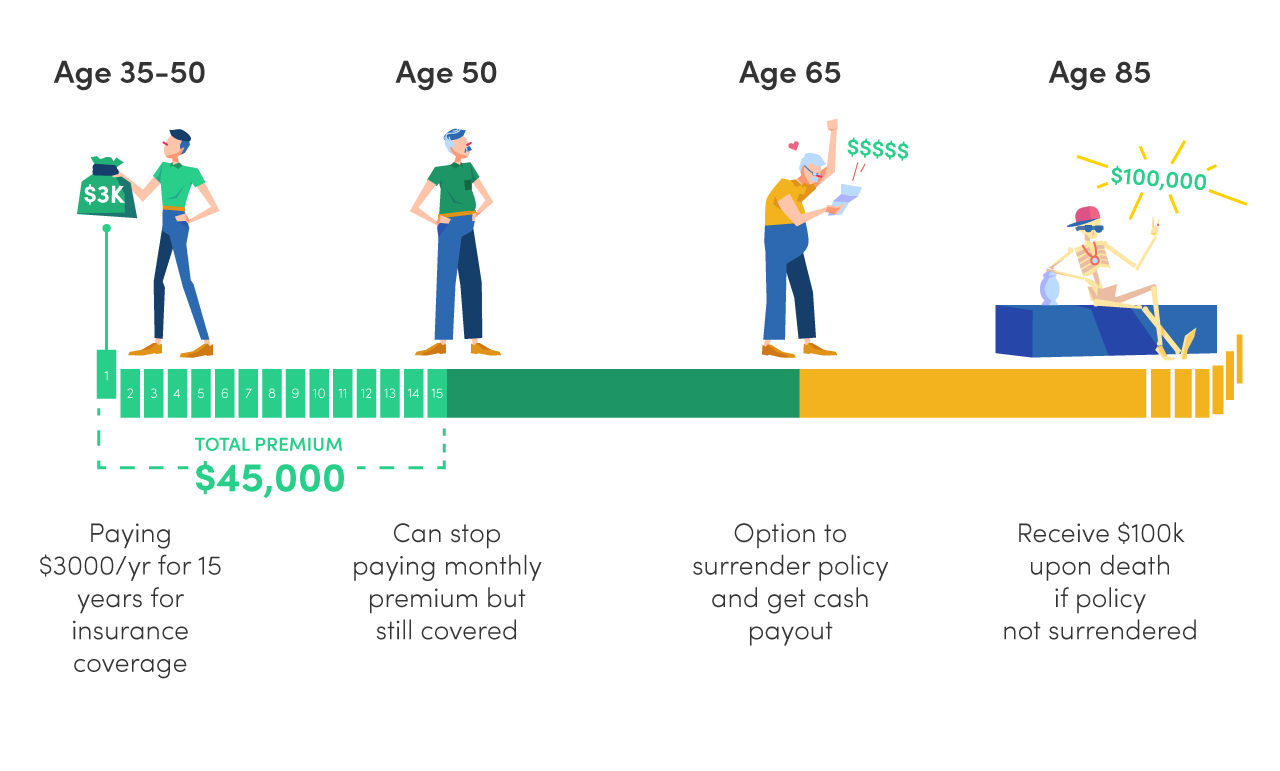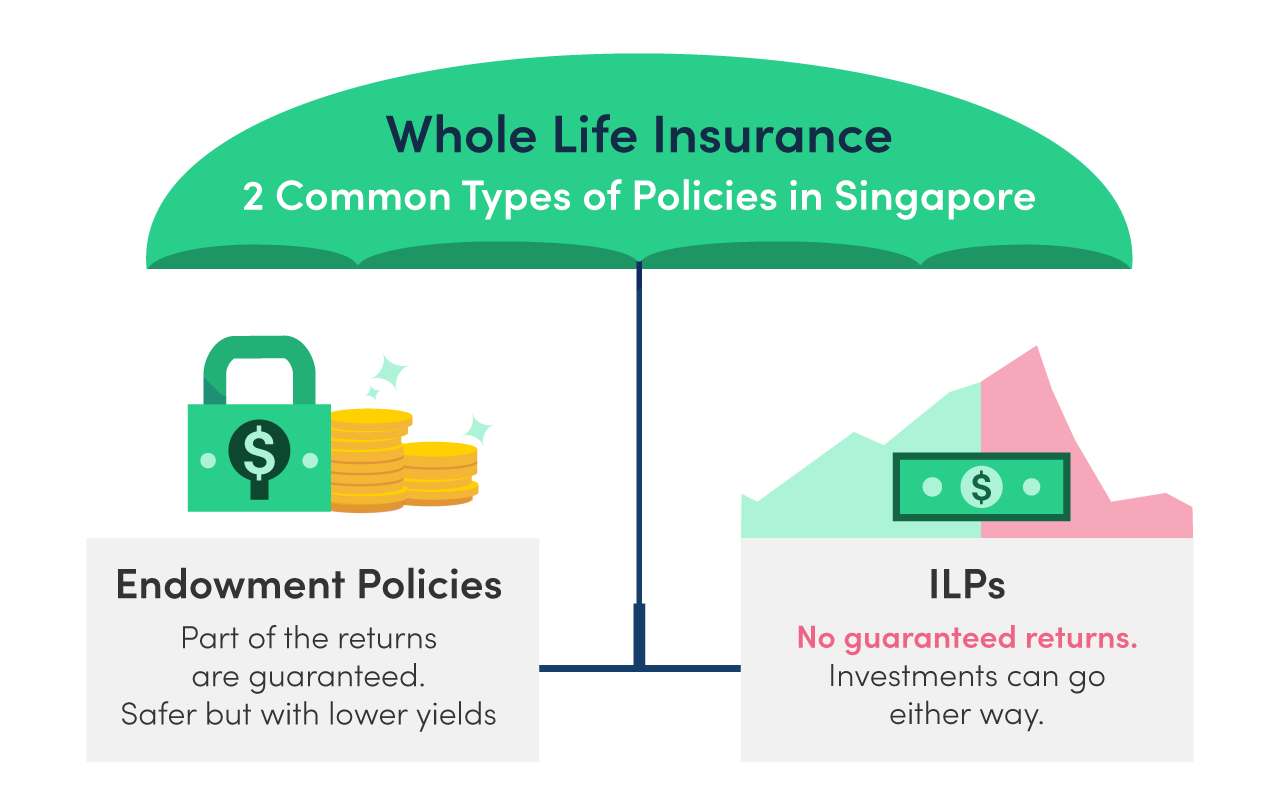Quick Guide to Understanding Endowment Plans in Singapore
In Singapore, most endowment plans are offered as part of whole life insurance plans which usually cover you till the end of your life. An endowment plan is often much more expensive than other types of insurance like health insurance and even term insurance, but it has the potential to grow the money which you’ve forked out for it.

What Is An Endowment Plan?
An endowment policy is somewhat like a savings or investment component of a whole life insurance plan. Some insurers offer endowment policies as part of their whole life insurance plans while others offer investment-linked policies (ILP) instead. Due to the nature of endowment policies, some people see their whole life policies as an investment/savings plan instead of just being a plain old protection plan, because of the characteristics of the endowment policy component. These features are considered “additional”, which make whole life insurance more expensive than term insurance.
How Does An Endowment Plan Work?
Endowment policies can be a beneficial way to help you build up financial discipline since the savings component is built into the monthly insurance premiums. So picking a suitable endowment policy may be a crucial step to a better savings plan.
To get you started, let’s use an example to illustrate. Assuming that you’re paying a monthly insurance premium of $250 for your endowment policy, and out of this amount, $100 might go into the insurance protection component, while $150 will go into the savings component.
For the next 15 years, you’ll fork out about $45,000 for a sum assured of $100,000. The insurance coverage will continue for the rest of your life even after your payment of premiums stops at age 50. After 15 years, you will likely be entitled to some accumulated cash value (depending on your insurer and your policy wording) if you surrender your policy upon reaching 65 years old.

Coverage
The coverage that an endowment policy provides is pretty extensive as it usually covers you for death, terminal illness and sometimes total and permanent disability (TPD) with a coverage period of up to end of life.
As the main objective of an endowment plan as part of a whole life insurance policy is to provide overall protection and the potential to grow your savings, you can expect to receive some cash benefits.
While some policies enable you to withdraw a certain amount of money per year after your policy acquires cash value, others such as retirement savings plans, include a non-guaranteed bonus portion on top of the guaranteed cash payout amount.
Payout assured and bonuses (upon death)
In the event that you die or get diagnosed with a terminal illness, the policy will pay out a benefit that is typically 105% of the premiums paid (up until the death) and any accumulated bonuses you have. The terminal illness benefit will be paid as a lump sum as an extension of the death benefit.
Guaranteed cash value
The guaranteed cash value will be the guaranteed amount of your policy, which excludes the non-guaranteed bonuses you've accumulated during the duration of the policy. The maturity value is also another form of guaranteed cash value you’re entitled to receive when your policy matures, which consists of the guaranteed sum and all the non-guaranteed bonuses (if you have a participating policy).
Non-guaranteed bonuses
In addition to your guaranteed cash value as mentioned above, you may or may not get these non-guaranteed bonuses. There are two types of non-guaranteed bonuses: reversionary bonuses and terminal bonuses, and these bonuses are affected by factors like the performance of the investment fund, the expenses incurred by the participating fund and death or sickness claim payouts for policies participating in that fund.

Things To Consider Before Buying An Endowment Plan
There are a couple of things to keep in mind while choosing a whole life insurance with an endowment policy component. This is a costly decision with quite a long-term impact as whole life insurance plans' premiums generally cost 10 to 12 times more than term life insurance plans' premiums as they effectively cover you for a longer period of time (up to age 99, 100, or death depending on your policy). So here’s a handful of important aspects to consider before you make the purchase of a lifetime.
100% capital guaranteed
Not many insurers out there offer this attractive feature like the Manulife Goal 10. It provides you 100% of your capital back when your policy matures. Picking such plans can help you avoid losing savings in the long term as you may get guaranteed payouts which are less than the total premiums you paid over the years.
Total distribution cost
This total distribution cost is actually part of the premium you paid and it is essentially the cost that your insurer paid to its distribution channel. It helps to know this cost, which is the amount you paid for the convenience of getting advice from a preferred financial advisor, so that you won’t be overpaying for a particular service.
Limited pay period
An endowment plan with a limited pay period means you’ll only have to pay premiums for a limited number of years in exchange for a lifetime’s coverage.
So the insurance coverage will continue for the rest of your life even after your payments of your premium ends at a certain age that is agreed in your policy terms with your insurer. Depending on your insurer and plan, you may also be entitled to some accumulated cash value in the event you decide to surrender your policy when you reach a certain age as per your policy’s terms and conditions.
Surrender value
Unlike a term life insurance plan which you will not get anything if your policy is surrendered early, an endowment plan usually will give you some cash value back, in terms of guaranteed and accumulated non-guaranteed bonuses if there are any.
The surrender value is the amount you'll get when you choose to terminate the policy early, and the surrender value will typically be lower than the premiums you paid. There are two portions to the surrender value in a participating policy, the guaranteed and the non-guaranteed portion.
Accumulated bonuses
Accumulated reversionary bonuses are added regularly to your policy. This form of accumulated bonus increases your total sum assured.
On the other hand, accumulated terminal bonuses are added once your policy matures, or when you make a claim or surrender the policy. It is calculated on top of the reversionary bonus. You should check with your insurer on this, or refer to your policy documents which will usually state a numerical value for the reversionary bonus that your insurer provides.
Avoid withdrawal before policy matures
Some insurers will offer an option to reinvest your cash benefits at a certain percentage after your endowment policy acquires cash value over the years. This percentage rate is the prevailing rate and may be changed, so if you have a retirement plan or an education plan, where the cash payouts are integral to the policy, it is much better to reinvest the cash payouts.
This is because as you withdraw from your policy, you are decreasing the sum assured and effectively decreasing the total amount you will receive when the policy matures.
Compare the best life insurance plans today!
Which Type Of Endowment Plan Is For You?
With so many insurance companies promoting their own range of whole life insurance plans with endowment policies, you may get a little overwhelmed with the plethora of choices. Fret not, we’ve the legwork for you and here’s a round-up of our 5 recommended endowment plans in Singapore.
Advantages And Disadvantages Of Endowment Policies
Advantages
- Longer coverage, almost a lifetime coverage
- Dependents can benefit by enjoying lower premiums when getting insured from a younger age
- Accumulates cash value over the years
- Offers guaranteed sum of cash payout
- Non-guaranteed bonuses
- Investment opportunities
Disadvantages
- Higher premiums
- Lower yields compared to ILPs
- More costly than a savings plan without life insurance component

Endowment Plans vs ILPs (Investment-Linked Plans)
Unlike endowment insurance policies, ILPs usually do not come with guaranteed values. The savings component of an ILP will be replaced with an investment component whereby a percentage of the premiums go into purchasing units in investment funds.
The value of the ILP is dependent on the performance of the fund you’ve bought into. There’s a higher risk involved as compared to endowment insurance plans but some prefer ILPs because of the opportunity to invest and have financial protection through a single financial product.
Moreover, there’s a range of funds to choose from that caters to different investment objectives and risk appetite. Whether you choose to get an endowment plan or ILP, you’ll have to be clear on how your decision will fulfil your financial objective and if you can afford the long-term costs involved. If you;d like to know more about the differences between the endowment plans and ILPs, you may read more about it in our Life Insurance in Singapore article.

Sign up for a free MoneySmart account to continue reading
With MoneySmart's free membership, you unlock unlimited access to blog, exclusive rewards on financial products, up to 70% cashback at the MoneySmart Store, and more! Registration only takes 30 secs.

